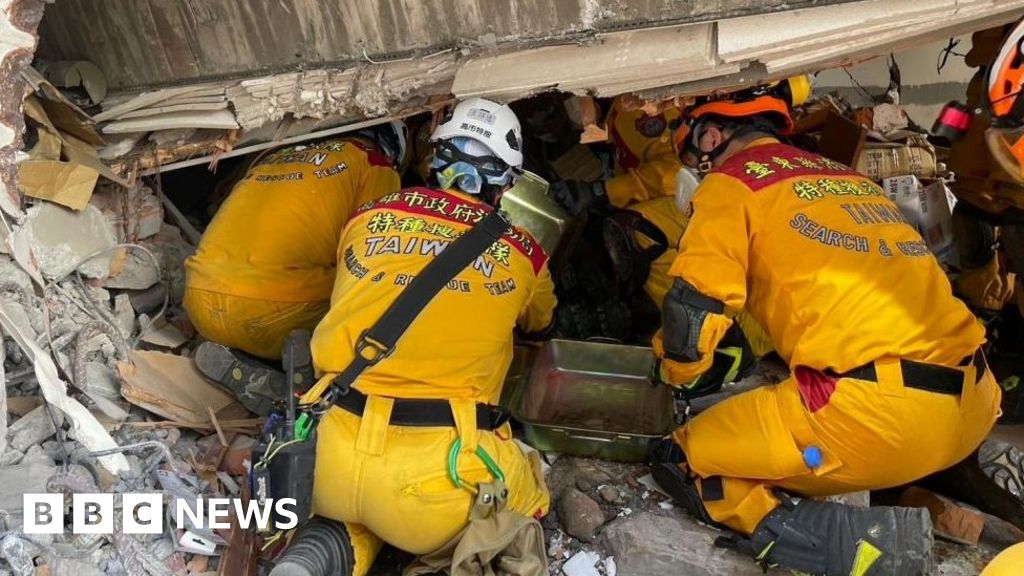Taiwan was hit by an earthquake, the strongest in 25 years, on Wednesday morning. The seismic event measuring 7.4 on the Richter scale according to the US Geological Survey, claiming least nine lives, with over 900 individuals sustaining injuries in the aftermath.

Also Read: Brazil: Heavy Rainfall Claims 25 Lives and Displaces Thousands
The earthquake, with a magnitude of 7.4, struck just before 8:00 am local time off the coast of rural, mountainous Hualien County.
The epicenter was approximately 18 kilometers south-southwest of Hualien City, with a depth of about 35 kilometers.
The quake claimed the lives of nine individuals, including hikers caught in rockslides and a van driver struck by boulders.
Over 930 people have been reported injured. Rescue teams are struggling to rescue those trapped in debris, including 64 individuals stuck in rock quarries.
The earthquake triggered 24 landslides and caused damage to 35 roads, bridges, and tunnels, crippling transportation networks across the island.
Train services were suspended, and sections of subway lines in Taipei suffered structural damage. Additionally, power outages affected more than 87,000 households.
Tsunami warnings were issued across the region, with coastal areas of Japan and the Philippines placed on high alert. The quake’s tremors were felt as far as Shanghai.
Taiwan’s semiconductor manufacturing industry faced disruptions, with chipmaker TSMC evacuating employees from affected factories.
The island’s role as a global technology hub concerns about supply chain disruptions and economic losses in the earthquake.
Despite Taiwan’s familiarity with earthquakes and robust disaster preparedness measures, the intensity of the quake caught many off guard. Authorities did not issue early alerts, assuming a milder event.
Swift mobilization of rescue teams and coordination between government agencies and the military demonstrate the nation’s resilience.
The earthquake evokes memories of past tragedies, the 1999 quake that claimed thousands of lives. Hualien County, prone to seismic activity, experienced a deadly quake in 2018.
The earthquake resulted in the loss of nine lives, including hikers caught in rockslides at Taroko National Park and a van driver struck by boulders.
Over 900 individuals suffered injuries, some severe, requiring immediate medical attention. The National Fire Agency spearheaded rescue efforts.
Also Read: World Water Crisis Threatens Peace, UN Report
The earthquake triggered landslides, rockfalls, and extensive damage to roads, bridges, and tunnels, disrupting transportation networks and impeding rescue operations.
The iconic Suhua Highway suffered damage, with numerous sections rendered impassable. The quake disrupted power supply to over 87,000 households.
The earthquake prompted tsunami warnings across Taiwan, Japan, and the Philippines, causing panic and necessitating evacuations.
Though assessments downgraded the threat, coastal regions remained on high alert. Countries including neighboring China and Japan, offered support.
Taiwan’s robust semiconductor industry, vital to global supply chains, faced disruptions as fabrication plants temporarily halted operations and infrastructure suffered damage. Concerns loomed over setbacks to production schedules and the economic impact.
Taiwan showcased resilience born from disaster preparedness measures and swift emergency response protocols.
The nation’s approach to earthquake readiness, including regular drills and building codes, mitigated the catastrophe’s human toll to some extent.
As rescue operations continue and the damage becomes clearer, attention turns towards the task of rebuilding shattered communities and restoring essential services.
With aftershocks expected in the coming days, authorities remain vigilant, prioritizing public safety and expedited recovery efforts to minimize further loss of life.
Also Read: World’s Oldest Fossilized Forest Dating Back 390 Million Years Discovered in UK




















